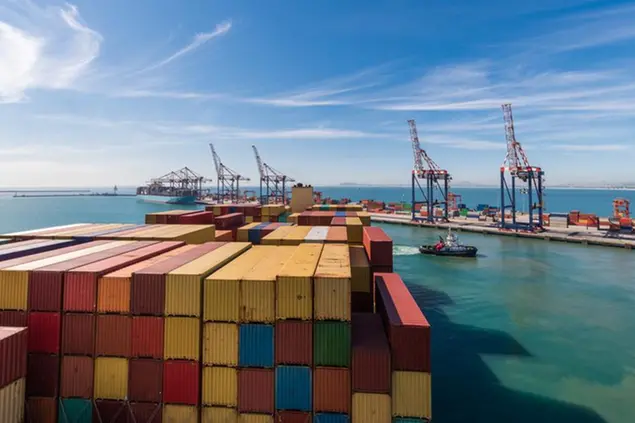PHOTO
Deteriorating rail conditions and rampant cable theft are driving the growth of the road freight sector in South Africa, but this shift is increasing greenhouse gas emissions. According to Rirhandzu Mashava of the Department of Transport, approximately one-third of long-distance freight has moved from rail to road between 2017/18 and 2022/23. Challenges such as lengthy delays at rail terminals, like Durban Container Terminal Pier 2, are exacerbating the problem, with dwell times extending to 22 days.
The growing reliance on road transport, despite rising fuel costs and infrastructure issues, is having a significant environmental impact. Transport is now the third largest emitting sector in South Africa, responsible for nearly 55 megatons of CO₂ emissions, with road transport contributing 91.2% of that total. Despite the Department of Transport's Green Transport Strategy aimed at reducing emissions by 5% annually, greenhouse gas emissions remain high.
Exploring solutions for emission reduction
The pressing question is what further measures can be taken to mitigate these environmental impacts.
According to Bidvest International Logistics (BIL), solutions must come from both the road and rail freight sectors.
BIL’s overland logistics director Marcus Ellappan suggests some “quick wins” in reducing CO² emissions, including policies around behaviour changes to promote more efficient driving habits and optimising routes with the use of various software platforms.
“Maintaining vehicles properly and upgrading to more fuel-efficient vehicles can also reduce fuel consumption.”
Ellappan says electric trucks, compressed natural gas vehicles and a move to Euro 5 engines (where diesel vehicles are equipped with particulate filters to trap tiny soot particles) and Euro 6 engines (mandatory use of selective catalytic reduction for diesel cars to reduce nitrous oxide emissions) are all viable options.
Such measures will benefit road freight companies in several ways, including environmental, social, and governance (ESG) wins, reduced carbon tax, and reduced maintenance, resulting in less downtime, noise pollution and air pollution.
Rail reform and future investments
BIL Business Development Executive Ntombimpela Nong supports the efforts of the rail reform and capacity growth initiative driven by the government and Transnet. The reduction in rail capacity has resulted in increased reliance on road transport and put additional pressure on road infrastructure and the environment.
“This can lead to higher transport costs, reduced competitiveness of South African goods, and missed economic opportunities,” she says.
However, Nong believes the rail freight industry can be crucial in driving a turnaround. She suggests that future investments in the railway should focus on modernising the rail infrastructure, together with green technologies such as hydrogen-powered and electric locomotives
Earlier this year, it was announced that by April 2025, Transnet Freight Rail will have to compete with private companies to manage the country’s rail infrastructure. This comes after the government decided to open the space to private players to participate in the significant investment required for the railway network in South Africa.
Optimising a multimodal transport system
“The Integrated Transport Plan (ITP) emphasises developing an interconnected multimodal transport system where rail and road work together to enhance overall efficiency and sustainability. A strengthened rail freight system can support and complement road transport, which remains crucial for last-mile deliveries, remote deliveries and shorter routes.”
She does not doubt that there is significant room for collaboration. Road freight can handle short-haul and remote deliveries, while rail can manage long-haul routes, optimising the strengths of both modes. As a result, the road and rail industries can create a more resilient and eco-friendly transport system.
All rights reserved. © 2022. Bizcommunity.com Provided by SyndiGate Media Inc. (Syndigate.info).
